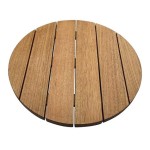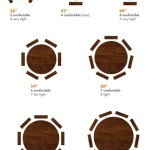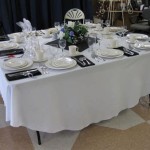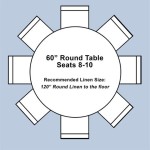Why Is a Table Napkin Important?
The table napkin, seemingly a humble piece of cloth or paper, plays a more significant role than simply wiping one’s mouth. Its importance extends beyond basic hygiene, encompassing aspects of etiquette, dining experience enhancement, and even environmental responsibility. Understanding the reasons behind the napkin's significance reveals its integral place in both formal and informal dining settings.
Throughout history, the need to maintain cleanliness during meals has been a consistent concern. Early forms of napkins included whatever materials were readily available, from leaves and bread crusts to shared cloths. The evolution of the napkin reflects the development of dining customs and societal expectations regarding hygiene and presentation. Today, napkins are widely considered essential components of a properly set table, symbolizing attentiveness to detail and respect for guests.
The choice between cloth and paper napkins is often dictated by the occasion's formality and budget. Cloth napkins are typically reserved for more formal meals, offering a touch of elegance and sophistication. Paper napkins, on the other hand, are a practical and cost-effective option for casual gatherings and everyday use. Regardless of the material, the presence of a napkin demonstrates a commitment to providing a comfortable and presentable dining environment.
Maintaining Hygiene and Cleanliness
The primary function of a table napkin is undoubtedly to maintain hygiene. During a meal, accidental spills and food particles are inevitable. The napkin serves as a readily available tool to address these situations, preventing stains on clothing and maintaining a clean eating area. Wiping one's mouth and fingers with a napkin after each bite promotes cleanliness and prevents the transfer of food residue.
Beyond individual hygiene, the use of napkins contributes to the overall cleanliness of the dining environment. By using a napkin, diners minimize the need to use their hands or other surfaces to clean up messes, reducing the spread of germs. This is particularly important in shared dining spaces, where multiple individuals are interacting and potentially sharing utensils and serving dishes.
Proper napkin etiquette further reinforces hygienic practices. The napkin should be placed in one's lap at the beginning of the meal, creating a barrier between clothing and potential spills. Dabbing the mouth with the napkin, rather than wiping vigorously, is considered more refined and prevents the forceful spreading of food particles. When excusing oneself from the table, the napkin should be placed on the chair, indicating that the diner intends to return. At the end of the meal, the napkin is placed loosely on the table to the left of the plate, signaling that the diner has finished eating.
The type of fabric used for cloth napkins can also impact its effectiveness in maintaining hygiene. Absorbent materials like linen and cotton are ideal for soaking up spills and wiping away food residue. These materials are also relatively easy to launder, ensuring that napkins are properly cleaned and sanitized between uses.
Enhancing the Dining Experience
Beyond its practical function, the presence of a table napkin contributes significantly to the overall dining experience. It signals to guests that attention has been paid to detail and that their comfort is a priority. A well-presented table setting, complete with neatly folded napkins, creates a more inviting and enjoyable atmosphere.
The aesthetic appeal of napkins can also enhance the dining experience. Cloth napkins, in particular, offer a wide range of possibilities for adding color, texture, and visual interest to the table setting. They can be chosen to complement the tablecloth, dinnerware, and other decorative elements, creating a cohesive and visually appealing overall look.
Napkin folding is an art form that can further elevate the dining experience. Intricate folds can transform a simple napkin into a decorative element, adding a touch of elegance and sophistication to the table. While elaborate folds are typically reserved for formal occasions, even a simple and elegant fold can make a significant difference in the overall presentation.
The tactile experience of using a cloth napkin can also enhance the dining experience. The soft and luxurious feel of linen or cotton against the skin can add a sense of comfort and indulgence to the meal. This is particularly true for special occasions, where diners are looking for a more refined and memorable experience.
The presence of a napkin can also promote a more mindful and deliberate approach to eating. By using a napkin to wipe one's mouth and fingers after each bite, diners are encouraged to slow down and savor their food. This can lead to a more enjoyable and satisfying dining experience overall.
Promoting Etiquette and Social Grace
The proper use of a table napkin is an integral part of dining etiquette and social grace. Understanding and adhering to napkin etiquette demonstrates respect for fellow diners and contributes to a more pleasant and harmonious dining atmosphere. It signals that an individual is aware of and adheres to established social norms and expectations.
Placing the napkin in the lap immediately after being seated is a fundamental aspect of napkin etiquette. This action signals to others that the diner is ready to begin the meal and that they are aware of the importance of protecting their clothing. It also sets a precedent for the rest of the meal, demonstrating a commitment to maintaining cleanliness and avoiding unnecessary messes.
Using the napkin discreetly is another key aspect of napkin etiquette. Dabbing the mouth gently, rather than wiping vigorously, is considered more refined and less distracting to other diners. Similarly, cleaning up spills and messes discreetly and efficiently minimizes disruption to the dining experience.
The placement of the napkin when excusing oneself from the table is also important. Placing the napkin on the chair indicates that the diner intends to return, while placing it on the table signals that they have finished eating. This subtle gesture provides important information to the waitstaff and other diners.
The proper handling of a napkin also demonstrates consideration for others. Avoiding the use of the napkin to clean utensils or plates is a sign of respect for the waitstaff and kitchen staff. Instead, diners should rely on the waitstaff to replace soiled utensils or plates as needed.
In the context of formal dining, knowledge of napkin etiquette is particularly important. Understanding the proper protocol for using the napkin can help individuals feel more confident and comfortable in formal settings, allowing them to focus on enjoying the meal and engaging in conversation.
Environmental Considerations
While traditionally made of cloth, the rise of disposable paper napkins has introduced environmental considerations into the discussion of napkin importance. The choice between cloth and paper napkins now involves evaluating the environmental impact of each option, along with considerations of cost and convenience.
Cloth napkins, when properly cared for and laundered, can be a more sustainable option than disposable paper napkins. Reusing cloth napkins reduces the demand for virgin paper and minimizes the amount of waste sent to landfills. However, the environmental impact of cloth napkins depends on factors such as the type of fabric used, the energy consumption of the washing machine, and the type of detergent used.
Paper napkins, on the other hand, offer convenience but contribute to deforestation and landfill waste. The production of paper napkins requires significant amounts of water and energy, and the disposal of used napkins adds to the growing problem of solid waste. However, some paper napkins are made from recycled materials and are biodegradable, which can mitigate some of their environmental impact.
Consumers can make more environmentally responsible choices by opting for cloth napkins whenever possible and by choosing paper napkins made from recycled materials when disposable options are necessary. Proper disposal of paper napkins, such as composting, can also help to reduce their environmental footprint.
Restaurants and catering services are also increasingly adopting sustainable napkin practices. Some establishments offer cloth napkins as the default option, while others provide paper napkins made from recycled materials. Educating consumers about the environmental impact of different napkin options can also encourage more responsible choices.
The overall impact of napkin choices on the environment is a complex issue with no simple solution. However, by considering the environmental implications of different options and making informed choices, individuals and businesses can contribute to a more sustainable dining experience.

Benefits Of Using Table Napkins Efavormart Com

Table Manners The Napkin Rooted In Foods

Benefits Of Using Table Napkins Efavormart Com

Benefits Of Using Table Napkins Efavormart Com

Benefits Of Using Table Napkins Efavormart Com

Napkin Love Clise Etiquette

Table Etiquette The Place Setting Rooted In Foods

Benefits Of Using Table Napkins Efavormart Com

Benefits Of Using Table Napkins Efavormart Com

Napkin Etiquette Table Manners
Related Posts








